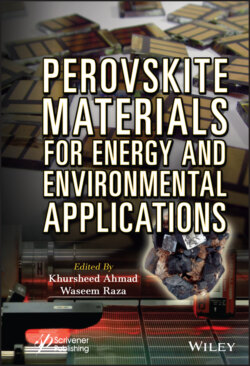Читать книгу Perovskite Materials for Energy and Environmental Applications - Группа авторов - Страница 52
2.7 Conclusion
ОглавлениеThe efficiency of the PSC in the laboratory has reached 23.1%, which is comparable to the single crystalline solar cell. Because of high achievable efficiency, the researchers of different backgrounds of science have contributed in the investigation of PSCs. The higher efficiency of PSCs has been achieved due to high coefficient of absorption and long diffusion lengths. Perovskite solar cell has desired properties, enormous potential, low cost, and high efficiency. Despite achieving high efficiency, there is much difference between the stability of PSCs (1000 hours) and silicon solar cells (20– 25 years). The future challenge is to increase stability. Another drawback is it has toxic material, like Pb, which is very harmful for human beings, as well as the environment. There are some problems that are not solved yet, such as the materials, to increase the scalability, processing of materials, and so on [38].
In total, there are three major concerns, which should be overcome before its commercialization. First, the degradation mechanism should be explored as humidity, heat, and UV light are the main reasons for degradation and brings instability in perovskite. Second, Pb is very harmful to nature, hence it should be replaced with some safer option. Third, PSCs has very high efficiency in small areas of 0.1 cm2, so this area must be increased such that efficiency and stability remains the same so that we can perform high scale [53]. Researches need to focus and improve on the perovskite and electron-hole transport materials in the future, so that we can use PSCs in place of the conventional solar cell. If these problems are solved, surely perovskite material is projected to have a significant part of the solar cell industry.
